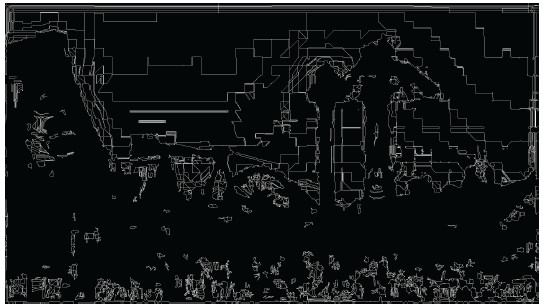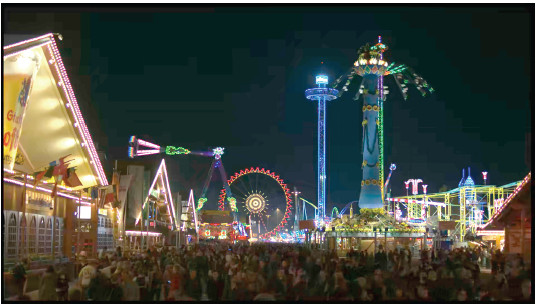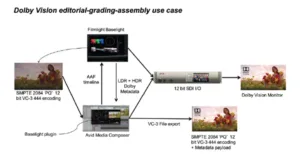With many “flavors” of HDR still being considered, what will that mean for the distribution part of the equation? That was one of the topics considered by several speakers in the “Compression” sessions at the SMPTE Fall conference.
VC-3 is one of the codecs being considered for the carriage of HDR content. According to presenter Shailendra Mather from Avid, VC-3 is a “low-complexity editorial intermediate and mezzanine codec that can be implemented in software or hardware”. It is backed by SMPTE standard ST 2019. Avid’s DNxHD codec, which is very popular in broadcast production, will implement proposed VC-3 enhancements.
There are many enhancements being proposed some of which include out-of-band color handling and the introduction of profiles and levels. Up to 12-bit content can now be handled with 4:4:4, 4:2:2 and even 4:2:0 chroma sub-sampling. Out-of-band color gamut transformations, like 2020 to 709 are supported as well as SDI-compliant video levels vs. out-of band full range levels.
Mather described how VC-3 can be used for Dolby Vision 12-bit color grading as one use case and Super Hi Vision 8K editing as another use case.
Piere Larbier of Ateme presented a nice summary of the various flavors of HDR being considered by the industry. He went on to say that when using the PQ curve with HDR content, it is very steep at high luminance values. Conventional encoding with HEVC will lead to mosquito noise and chroma errors around the bright edges. To avoid this, Larbier proposes using HEVC’s coding tree feature which allows finer macro-blocks to be defined around edges and reduce errors.

Banding can also result in compressed HDR content, even at high bit rates. The 10-bit ST-2084 PQ, HLG and even BT 709 10-bit curves are all actually above the Barten threshold for visibility of quantization errors for luminance below 100 nits – i.e. visibility of banding or posterization. Moving to 11-bit is needed to reduce this and 12-bit is preferred to eliminate posterization in the dark regions and some mid-tones.
His solution when using 10-bit encoders is to first detect areas where problems might arise. Then, add in a strong in-loop dithering noise prior to encode and a film grain technology to generate noise on the receiver side as HEVC encoding removes input noise. Alternatively, you can increase the contrast in the affected area and add dither noise in post production.
Olie Bauman from Ericsson Television showed images that were HEVC compressed and decompressed that confirmed what Larbier had said – that banding can occur in dark areas with the 709 10-bit curve that do not appear with the 2084 curve. However, fine details like wires can be lost with the 2084 encode are preserved with the 709 encode.
To identify where problems might exist, Bauman developed a technique that breaks the image into a series of cell of equal luminance. He then calculates the percentage of the image in cells of a certain size and plots the results of the compressed image. An example of the technique being used for cell size of more than 128 pixels is shown below, along with the video image showing the banding. This shows the technique is good at identifying problem areas – at least in this image. When this is compared to the original image, there are only a few areas where there more than 128 pixels with the same luminance.


At 5 Mbps compression, the compressed carousel image is “fairly” close to the original with the 709 encoding but “quite close” for the ST 2084 encoding. Bit rates of 1 and 3 Mbps performed poorly for either encode.

